EXPERIENCE ENCANVAS IN 60-MINUTES!
We're always happy to walk you through Encanvas no matter where you are in the world.

According to the Gartner report “Adopt a Composable DXP Strategy to Future-Proof Your Tech Stack,” 60% of mainstream organizations will use the composable business model as a strategic objective by 2023.
Your business model might benefit from artificial intelligence (AI), the Internet of Things (IoT), digital ledgers like Blockchain, data visualization, virtualization… even the MetaVerse. Meanwhile, our digital data fabric spans your enterprise to lever value from existing data and IT investments. Additionally, it offers an onramp for the competitive advantage the world of digital brings.
Businesses don’t want to produce ONE digital document. Once you’ve created your first digital document, you’ll soon discover many other publications and processes that benefit from the technology. To manage the lifecycle of designing, publishing, distributing, and analysing digital documents across your business, takes a highly sophisticated digital platform; one that’s easy to deploy, personalize, safe for data, and easy to govern, manage, and grow.
Technology can be powerful, but it can also be complex to implement and adapt. But not Encanvas. Instead, our three-tier architecture brings digital coherency, data security, and painless operational governance to your enterprise.
Quickly design and publish digital documents on Encanvas using our unique Canvas architecture. Canvases make data across and beyond your enterprise ‘composable.’ Likewise, a canvas can contain an unlimited number of sections. It brings together all the elements of digital documents—data, user interface (UX) design, if/then logic, presentation, and transition rules, design elements, governance (including management, distribution, ownership, archival rules, etc.)—in a simple intuitive format that’s easy to learn and use.
Composing new AI-powered digital documents creates smarter, more responsible, scalable AI. Therefore, this enables better learning algorithms, interpretable systems, and a shorter time to value promoting productivity and agility. Furthermore, canvases can be used as standalone documents or interpolated together to fulfil complex information processing functions across and beyond your business.
Imagine an invisible digital umbrella spanning your enterprise, able to interact with all your people, systems, data, and processes. To sum up, that’s what our digital fabric is all about. It’s a private-cloud deployed data processing environment for digital documents. As digital business accelerates, and data becomes increasingly complex, digital documents—underpinned by a digital data fabric—support the need to design personalized information experiences at pace, deploy fast, and manage painlessly.
In its latest digital transformation trends report, Gartner argues that—‘data fabrics leverage existing skills and technologies from data hubs, data lakes and data warehouses while also introducing new approaches and tools for the future.’
Use our Digital Data Fabric to create as many digital documents as you need and change them as often as you like. Publish outward-facing digital customer materials and portal solutions, or internal information collaboration and data processing solutions.
Data fabric: reduces time for integration design by 30%, deployment by 30% and maintenance by 70%.
(Gartner)
Encanvas Digital Data Fabric takes care of the complex data integration, cybersecurity, management, governance, and processing tasks that are needed to install robust enterprise-grade IT solutions. Our digital data fabrics maximize data value by simplifying integration challenges and reinforcing Master Data Management (MDM) rules; reducing the replication of data assets, minimizing data complexity, and speeding up the time-to-market of new digital document applications.
The safest way to control digital documents used in the enterprise is to manage published content in data safe containers, protected by rigorous information security policies. Digital Cloud Spaces are, in essence, private cloud containers offering unprecedented cybersecurity, governance, and scaling capabilities. Using Digital Cloud Spaces, Digital Data Fabrics can coexist on the same private cloud and are easily managed and replicated. Cloud clustering Underpinning Encanvas Digital Cloud Spaces is a series of proprietary industry-leading cloud clustering technology innovations.

More details coming soon.

Enterprise software describes the software layer of an enterprise computing platform used by business organizations to process data. It is generally associated with human-too-machine interfaces used by the stakeholders of an enterprise rather than machine-to-machine interfaces.
The common building blocks of a modern enterprise cloud computing platform are:
While no organization can function without enterprise software these days, how they design their software platform varies enormously. There are normally four layers to the enterprise applications software stack:
These are large and expensive software applications used to process mission-critical data to serve common back-office functions such as financial management, manufacturing, human resources, and customer relationship management. These systems deliver value to businesses by enforcing standards in how data is processed and by being extremely reliable to ‘keep the lights on.’ Investments in Systems of Record are in the tune of 60 to 75% of total enterprise software spend.
The gap that exists between the processing of standard back-office functions and the total data processing needs of the enterprise to fulfill its business model and serve up its customer value represents 10 to 20% of the total enterprise applications platform
These are use cases for software embedded into hardware such as smart devices used to manage assets and read-back customer activities and behaviors. Today, these represent 3-8% of the total enterprise stack but, thanks to trends towards increased use of Internet of Things (sensor-networked) technologies, this category is dramatically on the rise.
These are applications created by individuals and small teams to capture, cleanse, process, analyze and share information. This is where the demand for ‘citizen developer’ applications software largely comes from. Whilst it represents just 7-15% of total enterprise applications in terms of spending, it represents an important genre as these applications very much drive user and stakeholder experiences. Expectations on the quality of applications in this genre are extremely high because of the consumerization of IT; the realization of users that applications can be ‘that good’ as the result of using manual coding.
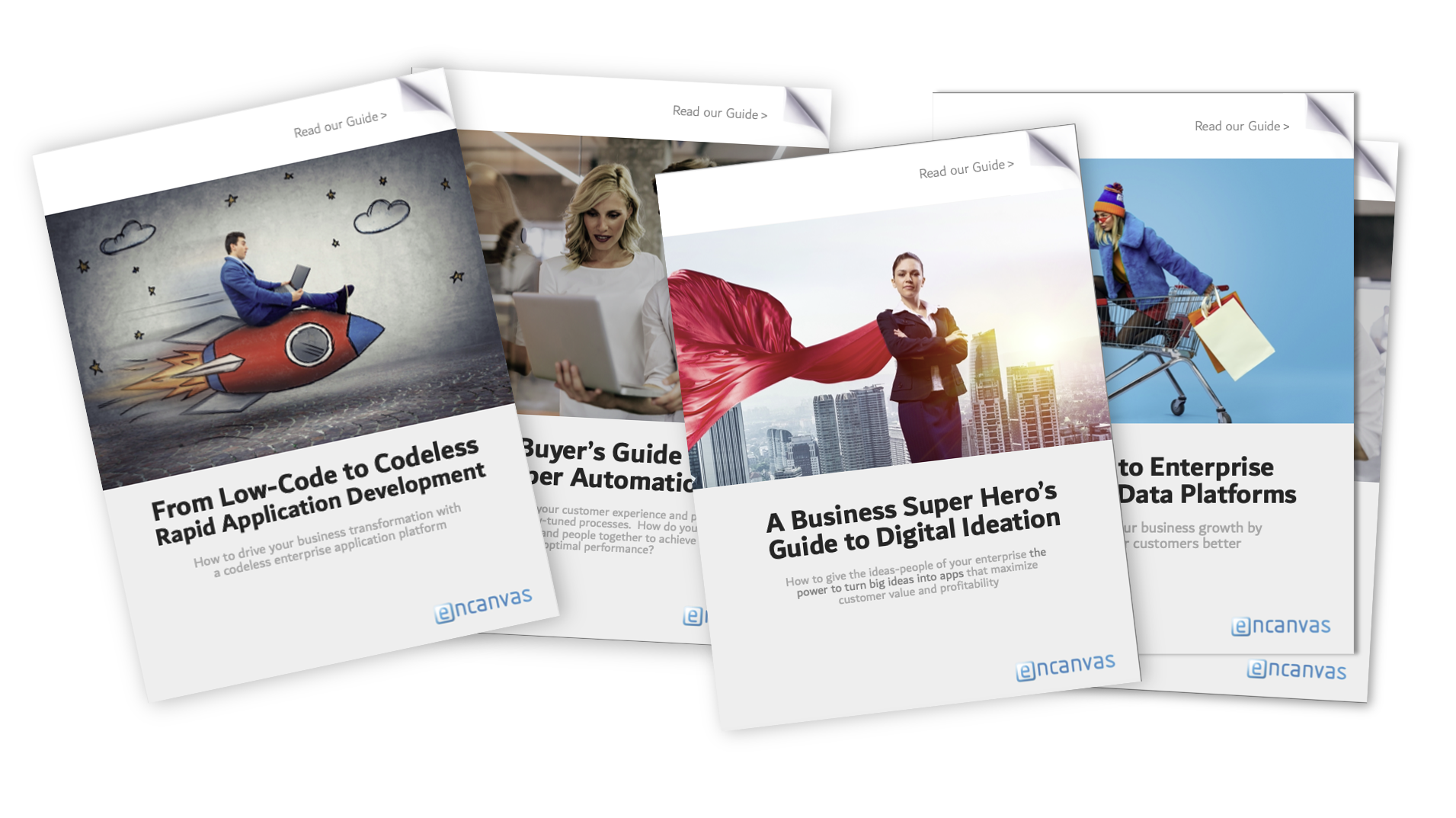
Guide to Digital Transformation
Guide to Hyper Automation
Guide to Digital Ideation
Guide to Customer Data Platforms
Guide to No-Code Platforms
Many businesses today are considering the potential of advanced technologies – such as artificial intelligence, the Internet of Things, big data, cloud computing, 3D printing, drones, blockchain, and virtual reality – to transform how. they create value for their customers.
When formalizing their digital transformation framework, many leading chief information officers are recognizing that traditional IT methods and tools are too slow, inflexible and costly to use. For this reason, they are turning to agile software development tools and platforms (either code lite, low code, or no code) to author prototypes rapidly, fail fast and bring new app solutions to market faster.
Encanvas offers the easiest to use and most complete toolkit for live wireframing and rapid applications development. It equips DevOps teams with the digital transformation tools they need to outperform competitive rivals.
With a general recognition that business success is increasingly derived from the ability of an enterprise to master and leverage its data value, senior management teams are increasingly exploring ways to make sense of their operational performance through data. The ability to re-use data – to harvest, cleanse, rationalize, and analyze it – has become a mission-critical need.
Secure&Live – A feature rich and data secure digital transformation platform. Secure and Live is a codeless Enterprise applications Platform-as-a-Service (aPaaS), built to turn business models and strategies into apps.
GlueWare – Enterprise iPaaS for bringing your data together, mashing it up, and bridging between your eCommerce store and back-office, streamlining processes for maximum results.
AppFabric – Build as many apps as you need using an agile codeless SDLC approach and change them as often as you like.
Live Wireframe – Design and publish ebooks, courseware and apps, then go live in two clicks!
CDP – Codeless Customer Data Platform to create a single view of your customer data. Use our data integration tools to harvest insights from across your enterprise and beyond.

Learn about the data safeguarding, features and modules of Encanvas that make it a leader in codeless enterprise aPaaS
Not all, but many present-day enterprise software architectures have some key issue areas. They include:
Suffering from legacy
Some businesses have been hoarding applications for years, ignoring many of them that are ‘good enough.’ With the pace of change in markets increasing every year, companies are constantly revising their business models. Legacy systems costs represent a major distraction, drain on resources and an anchor on innovation.
Too many applications
Access to Software-as-a-Service applications and the slow pace of internal software development has led many organizations to democratize their IT spend to departmental heads. A consequence of this trend has been the proliferation of SaaS tools.
The statistics around SaaS are unnerving. According to a recent report by Blissfully, a New-York startup that operates a platform to track SaaS adoption, the average company with 200 to 500 employees uses about 123 Software-as-a-Service (SaaS) applications these days. For mid-sized companies, there are an average of 32 different billing owners for the SaaS subscriptions. On average, an employee uses eight SaaS applications!
A continued ignorance towards the existence of shadow systems and the need for situational applications
Organizations turn a blind eye to self-authored desktop applications created using simple apps like spreadsheets because they don’t have the bandwidth to care. These applications are effectively being managed not by IT but by business professionals with other jobs to do (like running departments). Worse still, these unregulated apps are known to be unreliable in managing data quality, they scale badly. But that’s not the end of the story. These apps process and save data (so-called shadow data) that’s invisible to IT, yet it can contain private data, confidential company financial data, legal contracts, and competitive information that might place an organization at risk.
In most organizations, a gap exists between inflexible Systems of Record – used to enforce good practice in common core back-office processes such as financial management, human resources, and customer relationship management – and the demand for applications from departments, users, teams, customers, suppliers, and other stakeholders to support the fulfillment of a business model orchestration.

Ian Tomlin is a management consultant and strategist specializing in helping organizational leadership teams to grow by telling their story, designing and orchestrating their business models, and making conversation with customers and communities. He serves on the management team of Encanvas and works as a virtual CMO and board adviser for tech companies in Europe, America and Canada. He can be contacted via his LinkedIn profile or follow him on Twitter.
Now read:
At Encanvas we have a passion for low-code / no-code (we like to say codeless) software development. We’ve been leading innovation in the enterprise rapid applications development (low-code / no-code / data mashups) industry since 2002.
Our enterprise digital transformation platform is used to design, deploy and run custom apps by uniquely blending application (aPaaS), integration (iPaaS), Robotic Process Automation (RPA), and data mashup codeless software tools.
Encanvas brings agility and innovation to businesses. Used by data-driven organizations around the world, our platform evolves digitalization plans at the speed of light to maximize customer experience and minimize IT costs. Accelerate time to value of new applications as part of your digital transformation or data engineering program. Read the Encanvas Blog to learn more about what we do.
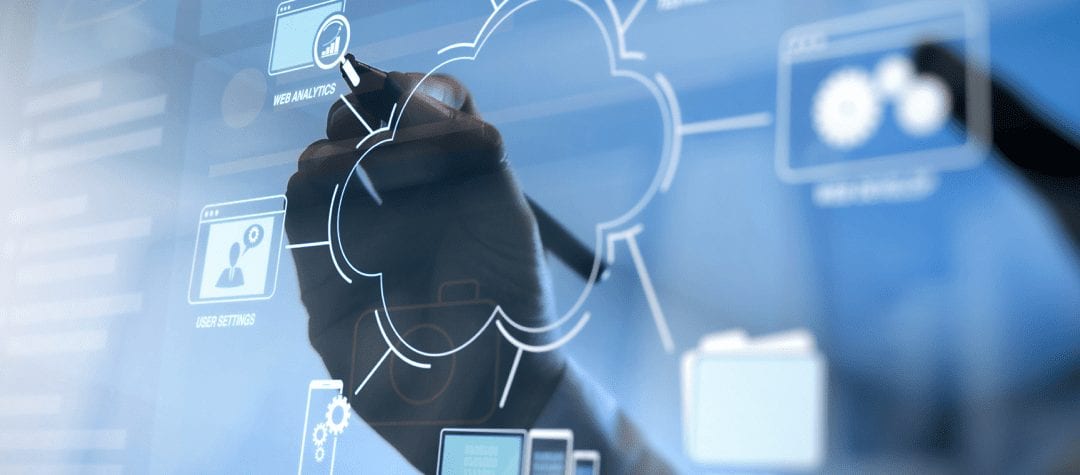
Discover Why aPaaS Technology Has Become The Secret Sauce of Cloud Computing
Written by Ian C. Tomlin | 12th January 2024
Read this article to get up-to-speed on applications Platform as a Service technology.
A Platform as a Service (PaaS) or application Platform as a Service (aPaaS) is the component of cloud computing services that facilitates the design, deployment and operation of potentially infinite numbers of apps, bots, digital documents and portals using no-code or low-code development methods. This reduces the complexity of building and maintaining a digital infrastructure whilst accelerating applications developments and improving business agility.
What was missing was the cloud tooling to enable Software-as-a-Service vendors (and enterprises themselves) to design, deploy and run applications. This is where enterprise aPaaS solutions come in.
Your aPaaS should support the full “Software Lifecycle” which allows cloud consumers to develop cloud services and applications (e.g. SaaS) directly on the PaaS cloud. Hence the difference between SaaS and PaaS is that SaaS only hosts completed cloud applications whereas PaaS offers a development platform that hosts both completed and in-progress cloud applications. This requires PaaS, in addition to supporting application hosting environment, to possess development infrastructure including programming environment, tools, configuration management, and so forth.
One of the challenges of porting applications to the cloud has been the risk of data loss. Data security has become an increasing concern to organizations because of their greater reliance on data to continue business operations. aPaaS platforms have to simplify how data is uploaded to the cloud, how it is cleansed, aggregated, and formed into new apps.
Additionally, the increased compliance risks of processing personally identifiable information (PII) have made organizations more concerned about the security risks of cloud-deployed applications. For this reason, being able to track what data is uploaded, who does it, where it goes to, etc. is essential for any aPaaS to be considered ‘enterprise grade.’

aPaaS platforms fulfil the business need to create custom apps. In a digital age, these need to be delivered fast, at low cost, and very low risk. aPaaS platforms began as low-code, then no-code and are now moving to a completely codeless format. Equipping organizations to design, deploy and run as many apps as they need, an aPaaS removes the barrier between IT and ‘the business.’
Coding and scripting is the biggest reason why software development has been traditionally unpredictable, costly and unable to produce best-fit software results. Encanvas uniquely automates coding and scripting. Our live wireframing approach means that business analysts can create the apps you need in workshops, working across the desk with users and stakeholders.
With a general recognition that business success is increasingly derived from the ability of an enterprise to master and leverage its data value, senior management teams are increasingly exploring ways to make sense of their operational performance through data. The ability to do away with data spaghetti; to re-use data – to harvest, cleanse, rationalize, and analyze it – has become a mission-critical need. A recent innovation that has added further data handling dexterity to Encanvas is HyperDrive. Launched in 2021, HyperDrive is an agnostic data plug-in enabler that turns any data type, DLL or plug-in into an integrated component of the Encanvas codeless design architecture.
With businesses using technology ever more to generate a competitive advantage in their market, it’s almost impossible to imagine a business model that doesn’t benefit from a great web app, or customer portal. This is causing organizations to become app factories, churning out custom apps as quickly as they can come up with ideas on how to improve customer experience, service new product lines, and cut back-office operating costs.
To orchestrate business processes, organizations are adopting aPaaS platforms to interface between:
1. Workers and computer systems (human-to-machine-interfacing-applications) and;
2. Computers (machine-to-machine-interfacing-applications).
Perhaps unsurprisingly, some processes require both human and machine interfaces. Additionally, Robotic Process Automation – the use of software robots to manage data flows and automate tedious tasks – has become a common characteristic of aPaaS platforms.
With a general recognition that business success is increasingly derived from the ability of an enterprise to master and leverage its data value, senior management teams are increasingly exploring ways to make sense of their operational performance through data. The ability to re-use data – to harvest, cleanse, rationalize, and analyze it – has become a mission-critical need.
An application Platform as a Service is the ecosystem used to orchestrate the end-to-end software development lifecycle (SDLC) for enterprise apps. While the focus of aPaaS is often towards speed of development, etc. arguably the most important selection factors come down to the hygiene issues of data integration, data security, deployability, scalability, data governance, and resilience.
The need for greater agility in IT systems, together with the rising influence of operational departments on enterprise software buying decisions, has led to the rise in application platforms that allow non-programmers to author applications. aPaaS platforms will generally adopt Low-Code, No-Code or sometimes even Codeless approaches to developing applications. In doing so, they reduce or remove the need to see or use programming code or script in the design, deployment and operational phases of the Software Development Cycle.
Encanvas is an enterprise software company that specializes in application Platform-as-a-Service (aPaaS) solutions and helping businesses to create above and beyond customer experiences. The platform removes the barrier between IT and the business. Coding and scripting is the biggest reason why software development has been traditionally unpredictable, costly and unable to produce best-fit software results. Encanvas uniquely automates coding and scripting. The software’s live wireframing approach means that business analysts can create the apps you need in workshops, working across the desk with users and stakeholders.
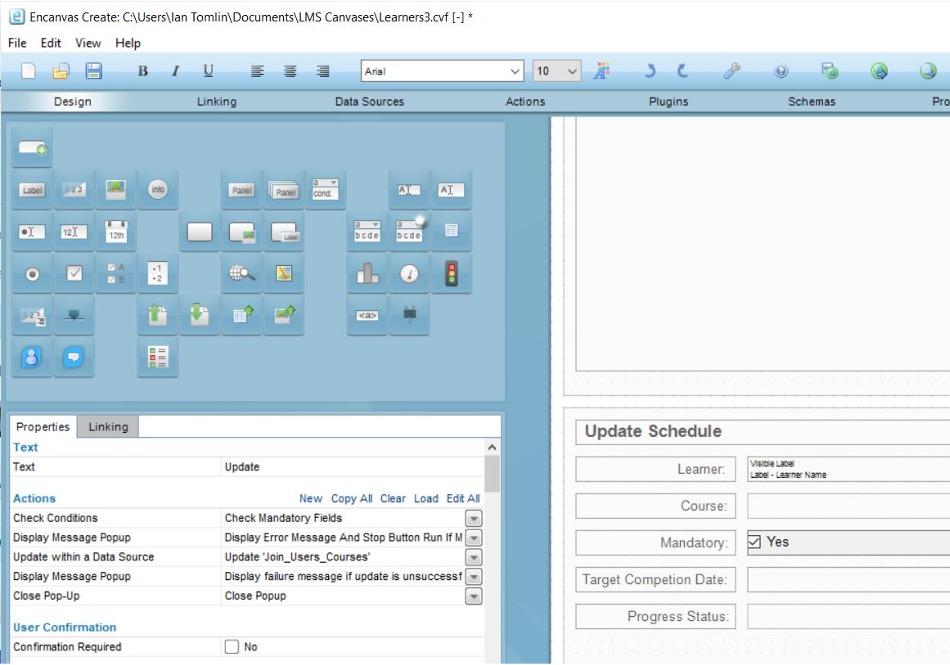
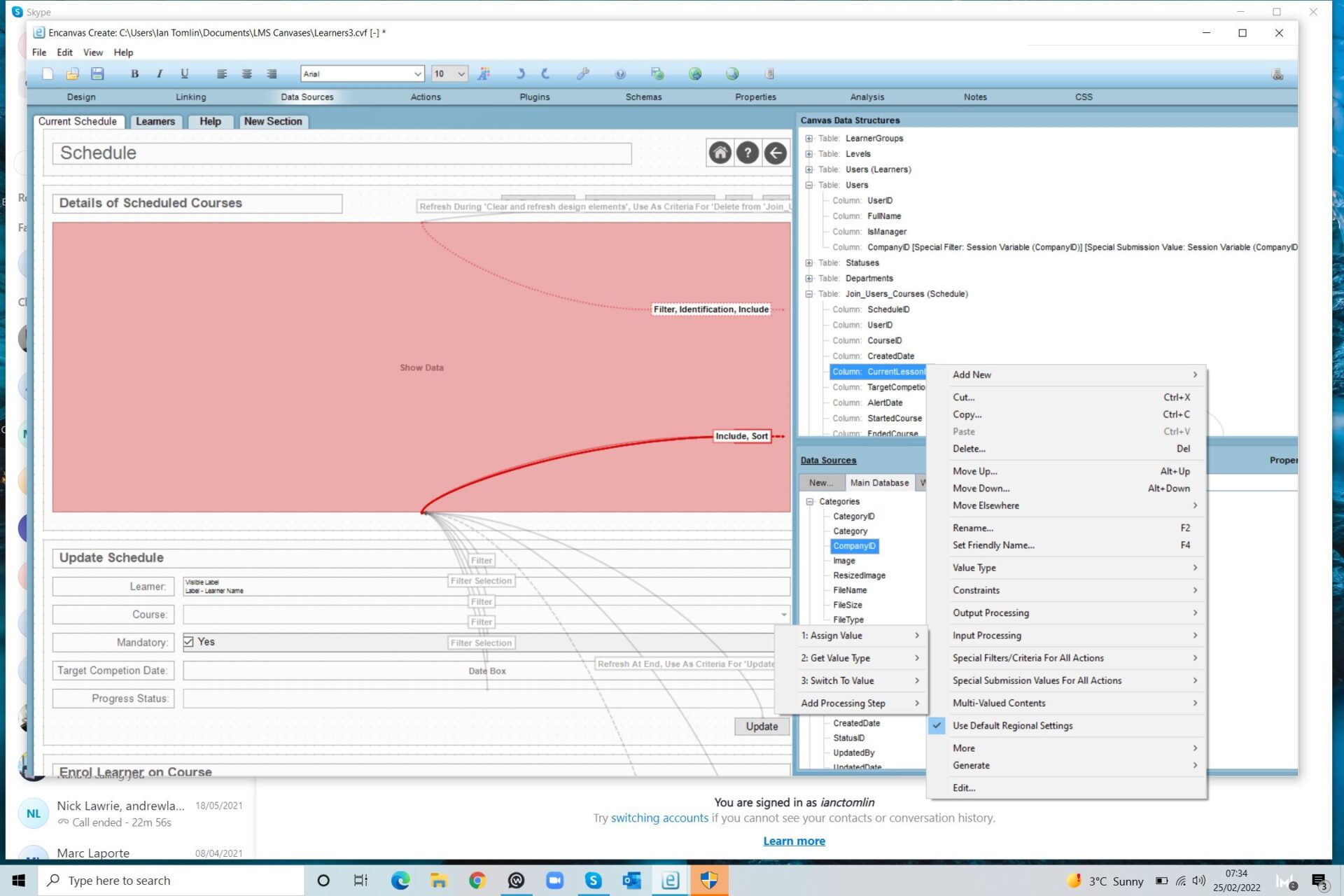
In most organizations a gap exists between inflexible Systems of Record – used to enforce good practice in common core back-office processes such as financial management, human resources, and customer relationship management – and demand for applications from departments, users, teams, customers, suppliers, and other stakeholders to support the fulfilment of a business model orchestration. A cloud aPaaS creates an umbrella across existing systems and fills the void in useful apps that workers, customers, suppliers, and other stakeholders want to use.
Now read:

Most enterprises today operate more than 80 SaaS apps, the consequence being ‘data sense’ is harder. The good news is that you can use a no-code aPaaS platform to bridge across enterprise silos to tame data spaghetti and create a single version of the truth

When the possibility of Software-as-a-Service (SaaS) solutions arrived into the market in the early 2000s — heralded in by the evolution of web platforms and cloud computing — they were game-changing for innovators in the tech industry.
Through cloud SaaS innovations, developers could bring their products to market faster (and eat much lower costs), focus on very tight niche solutions, offer products on a subscription, and give customers the opportunity to try them out immediately. Furthermore, technical support and endorsements could be supplied through the same online site that sold the products.
For buyers, SaaS was equally advantageous. No longer did they need to commit to a purchase before experiencing a product to see if it delivered value. The quality of products leaped up the scale, as providers HAD to deliver excellent quality, intuitive, and responsive applications.
The downside of SaaS is that it spreads your data across a wide number of data silos.
Enterprise computing practitioners were somewhat less thrilled by SaaS. Before its arrival, the role of the Enterprise CTO was unquestioned. They were the gods of technology, and nobody could get anything done in IT without their blessing.
The idea that departmental managers could arrive at the IT desk and start demanding software products they hadn’t even seen before, and show them immediate advantages was hard to counter, and left many IT heads on the back foot, trying to defend the common sense of requiring testing, integration and further validation before any recommendation was adopted.

The rise of SaaS adoption levels in the enterprise has soared over two decades, as department heads have got ever more involved in selection decisions on the tools they, and their teams, want to use. The power to make decisions drifted from the center of the enterprise to the margins.
Few could argue that the quality of applications used in business has benefited from SaaS. But at what cost?
Step into any large enterprise and you’ll encounter find the common problem of data held in various SaaS platforms with departmental managers pulling their hair out trying to gather it up to drive decisioning.

Guide to Digital Transformation
Guide to Hyper Automation
Guide to Digital Ideation
Guide to Customer Data Platforms
Guide to No-Code Platforms
Software-as-a-Service technology has played its part in making it close to impossible for real-time business decisioning to happen across the enterprise without an additional layer of ‘business intelligence and analytics’ technology being superimposed.
Even with the best data visualization and analytical tools, the problem of fragmented data silos pervades.
It’s not simply the case that SaaS tools separate usage activity into different places across the enterprise computing biosphere, using a myriad of separately authored apps results in every app using its own core data tables for common things that every organization needs to know about — such as people, departments, organizational hierarchies, policies, processes, suppliers and user groups. While some of these building blocks can be inherited from common directories, most are simply individually reproduced time and again by vendors.
Growing demand from department leaders and executives for new apps and real-time data analytics has created a demand for data reuse. And it’s when these requests emerge that the problems of data integrity and quality emerge.
Install any new digital innovation into an enterprise, and it’s almost inevitable that existing data will want to be harnessed.
When this happens, time and again, one finds that the original data tables operating within SaaS applications are incomplete, unused, or irrelevant. Business Analysts find themselves scratching their heads trying to work out which bits of data to string together to build a reliable picture of the operating reality.
Businesses want to be ‘digital’ but lack the quality and integrity of data to innovate.
It begs the question: Is there a better way? The answer is yes — and it’s been around for a while.
Secure&Live – A feature rich and data secure digital transformation platform. Secure and Live is a codeless Enterprise applications Platform-as-a-Service (aPaaS), built to turn business models and strategies into apps.
GlueWare – Enterprise iPaaS for bringing your data together, mashing it up, and bridging between your eCommerce store and back-office, streamlining processes for maximum results.
AppFabric – Build as many apps as you need using an agile codeless SDLC approach and change them as often as you like.
Live Wireframe – Design and publish ebooks, courseware and apps, then go live in two clicks!
CDP – Codeless Customer Data Platform to create a single view of your customer data. Use our data integration tools to harvest insights from across your enterprise and beyond.

Learn about the data safeguarding, features and modules of Encanvas that make it a leader in codeless enterprise aPaaS
The concept of cloud Platform-as-a-Service solutions has been buzzing around for over a decade since the arrival of cloud computing. PaaS describes the layer of technology that sits between Software-as-a-Service and the mechanical end of cloud–hardware infrastructure, memory disks and the like.
A no-code application PaaS is an environment for designing, deploying and operating tens — if not hundreds — of apps and software robots without needing to use code to design, deploy, and run them.
Using no-code-aPaaS means that Business Analysts found within IT or Digital teams (not coders) author applications. They do so working in consort with business stakeholders in what Gartner fashionably calls ‘fusion teams.’
Applications requirements go straight from the workshop whiteboard into a live wireframe that swiftly becomes a new application.
Examples of mobile and web desktop applications designed and deployed on no-code aPaaS
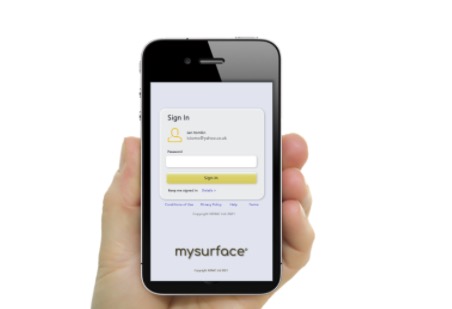
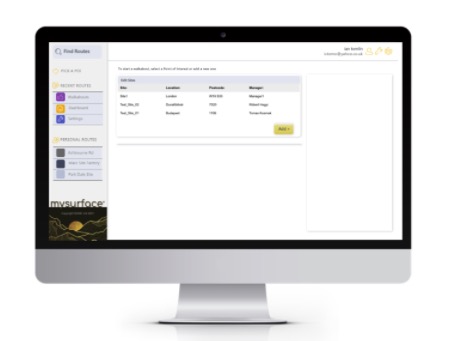
What makes no-code aPaaS different to what comes before is that at least 60% of the things you need to produce an Enterprise App come out of the box. It means the only things business Analysts need to get right are the drag and drop rules, if-then logic and workflows of the application they are building that are unique to the requirement. While No-Code applications development is fast, building apps on a No-Code Application Fabric is even faster.
People used to argue you needed a two-speed IT capability to make digital business work. That notion has thankfully gone away. No-code aPaaS returns IT influence from the outer fringes of the enterprise to the center.
That’s an awkward conversation in today’s boardrooms, but it’s arguably a necessary one.
Organizations that want to harness data, become data-driven, keep data safe, eradicate self-authored apps and spreadsheets, achieve excellence in customer experience, serve up the best applications for their stakeholders, and cut costs. History tells us that the best way to achieve it is to have a unified computing and data environment.

Data quality/integrity benefits include:
1. IT people used to coding will be resistant to change
2. Departmental heads may initially be resistant to the idea of sharing their data
3. Not every no-code aPaaS offers ALL the features you will need. So selecting the right platform with be important and isn’t always straightforward.

Ian Tomlin is a management consultant and strategist specializing in helping organizational leadership teams to grow by telling their story, designing and orchestrating their business models, and making conversation with customers and communities. He serves on the management team of Encanvas and works as a virtual CMO and board adviser for tech companies in Europe, America and Canada. He can be contacted via his LinkedIn profile or follow him on Twitter.
Now read:
At Encanvas we have a passion for low-code / no-code (we like to say codeless) software development. We’ve been leading innovation in the enterprise rapid applications development (low-code / no-code / data mashups) industry since 2002.
Our enterprise digital transformation platform is used to design, deploy and run custom apps by uniquely blending application (aPaaS), integration (iPaaS), Robotic Process Automation (RPA), and data mashup codeless software tools.
Encanvas brings agility and innovation to businesses. Used by data-driven organizations around the world, our platform evolves digitalization plans at the speed of light to maximize customer experience and minimize IT costs. Accelerate time to value of new applications as part of your digital transformation or data engineering program. Read the Encanvas Blog to learn more about what we do.

Using a no-code design platform, designers use visual building blocks, if/then rules and simple wizards to create user interfaces and applications logic. The design tool forms an abstraction layer. behind the scenes, the app is converting your beautiful design into bits and bytes – so you don’t have to. It means anyone with basic database or spreadsheet knowledge can become a citizen developer.

Enterprise computing practitioners were somewhat less thrilled by SaaS. Before its arrival, the role of the Enterprise CTO was unquestioned. They were the gods of technology, and nobody could get anything done in IT without their blessing.
The idea that departmental managers could arrive at the IT desk and start demanding software products they hadn’t even seen before, and show them immediate advantages was hard to counter, and left many IT heads on the back foot, trying to defend the common sense of requiring testing, integration and further validation before any recommendation was adopted.

The rise of SaaS adoption levels in the enterprise has soared over two decades, as department heads have got ever more involved in selection decisions on the tools they, and their teams, want to use. The power to make decisions drifted from the center of the enterprise to the margins.
Few could argue that the quality of applications used in business has benefited from SaaS. But at what cost?
Step into any large enterprise and you’ll encounter find the common problem of data held in various SaaS platforms with departmental managers pulling their hair out trying to gather it up to drive decisioning.
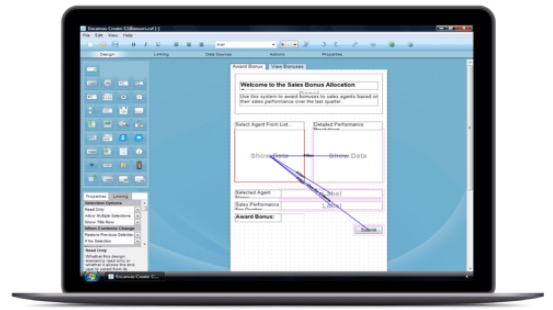
Businesses build custom apps using no-code platforms for lots of reasons. Step through the latest articles on app engineering and you’ll find the three main areas of no-code application development demand. They are:
Customers want to serve themselves. That means processes need to extend beyond the remit of a company website. To bind together front and back-office systems requires the development of new apps. Additionally, these apps need to be deployed on mobile, desktop and web form factors. They must interact with the incumbent systems and harvest data from across and beyond the enterprise.
Another major reason for the rise in no-code application development comes from the recognition that back-office systems need to be automated. Most businesses today rely on hard-copy documents and humans to some extent to fill in gaps between automated processes. Broken process steps and simple things like signatures are common culprits for offline process steps. Hyperautomation is about leveraging the latest crop of digital technologies—including blockchain, AI, big data, cloud computing, robotics and RPA, chatbots, the Internet of Things (and sensor networks), etc.—to automate processes at scale. To create the apps you’ll need, manual coding isn’t an option isn’t an option because it takes too long and costs too much. That’s why people are turning to no-code applications development.
The democratisation of artificial intelligence technology has led to a dramatic growth in the use of computers in decisioning that would previously have been left for humans to do. Most startups finding investment in Silicon Valley these days have an ‘AI’ aspect to their business models. Data analysis and decisioning form a major part of the digital transformations businesses are today considering to gain a competitive advantage on their rivals. All these aspects of enterprise IT fundamentally need no-code application development to speed their adoption.
Justify one no-code application development for any of the above categories, and you will find the opportunities for no-code app development don’t stop there.
Most businesses today, even will all of the great SaaS tools and business apps at their disposal, are underpinning a large proportion of their critical business processes with spreadsheet systems and self-authored apps that rest on the desktop and are largely invisible to IT.
Back in the day, that wasn’t really an issue—and everyone did it—but in an era where data security and privacy is everything, and customers want the transparency of operations to serve themselves 24/7, well, spreadsheets quite frankly don’t cut the mustard. The downside of SaaS is that it spreads your data across a wide number of data silos. This all means every company I know has a shopping list of new no-code developed apps they want to build to serve customers better, automate further and faster to cut costs, and to improve data use and value, through richer data analytics and decisioning.
Back in the day, that wasn’t really an issue—and everyone did it—but in an era where data security and privacy is everything, and customers want the transparency of operations to serve themselves 24/7, well, spreadsheets quite frankly don’t cut the mustard. The downside of SaaS is that it spreads your data across a wide number of data silos. This all means every company I know has a shopping list of new no-code developed apps they want to build to serve customers better, automate further and faster to cut costs, and to improve data use and value, through richer data analytics and decisioning.
Which all sounds great. In the real world of digital businesses today, no-code application developments extend beyond the expectation that only one app will be the outcome of that investment. Businesses need enterprise grade no-code platforms that support not just the design, but the roll-out and ongoing operational maintenance of custom no-code apps.The enterprise IT today is flooded with new ways to develop business applications using low-code or no-code tooling. This innovation in software engineering reduces or removes the need for coding and scripting when authoring apps. These tools help a non-technical (or less IT competent) user to build custom apps for themselves.
Secure&Live – A feature rich and data secure digital transformation platform. Secure and Live is a codeless Enterprise applications Platform-as-a-Service (aPaaS), built to turn business models and strategies into apps.
GlueWare – Enterprise iPaaS for bringing your data together, mashing it up, and bridging between your eCommerce store and back-office, streamlining processes for maximum results.
AppFabric – Build as many apps as you need using an agile codeless SDLC approach and change them as often as you like.
Live Wireframe – Design and publish ebooks, courseware and apps, then go live in two clicks!
CDP – Codeless Customer Data Platform to create a single view of your customer data. Use our data integration tools to harvest insights from across your enterprise and beyond.

Learn about the data safeguarding, features , integration tooling and modules of Encanvas that make it a leader in codeless enterprise aPaaS
Every good no-code applications designer knows that the best results come from an engaged stakeholder group able to articulate how an app should work.
The design process today needs to allow business people and app stakeholders to get hands-on in the app development. This means removing the code from design screens, because normal human-beings that chose not to take Computing as their primary choice in college, don’t fair well when code is presented on a screen. It’s an instant put-off.
For this reason, no-code software platforms are taking off in popularity. Not only do they produce faster results, but generally the quality of apps they produce is as better fit to business needs.
At some point, no-matter who authors an app, it needs to be handed over to the IT guys for it to be properly maintained and managed.
In the world of computing today, data security and privacy are foremost in the minds of leaders responsible for business continuity and keeping the lights on.
This means self-authored apps using no-code must co-exist with systems of record (like ERP and financial systems) as part of a joined up enterprise digital platform.
It also means, IT admins and architects need their own robust and easy to administer toolsets to manage the roll-out and governance of apps developed by the business.

Guide to Digital Transformation
Guide to Hyper Automation
Guide to Digital Ideation
Guide to Customer Data Platforms
Guide to No-Code Platforms
In Germany, most companies have what we’d describe as an ‘Organization Department.’ This is a team of people committed to the continuous improvement of organizational designs, behaviors, systems, processes, compliance, workforce incentivization, and data governance.
If you want to really maximize the potential of your data and the operational effectiveness of your business, applications development should not be seen as a one-time-only ad hoc event, but an integral part of continuous organizational improvement. That means building your tech tools into the improvement team of your organization, how so ever that manifests itself.

Ian Tomlin is a management consultant and strategist specializing in helping organizational leadership teams to grow by telling their story, designing and orchestrating their business models, and making conversation with customers and communities. He serves on the management team of Encanvas and works as a virtual CMO and board adviser for tech companies in Europe, America and Canada. He can be contacted via his LinkedIn profile or follow him on Twitter.
Now read: